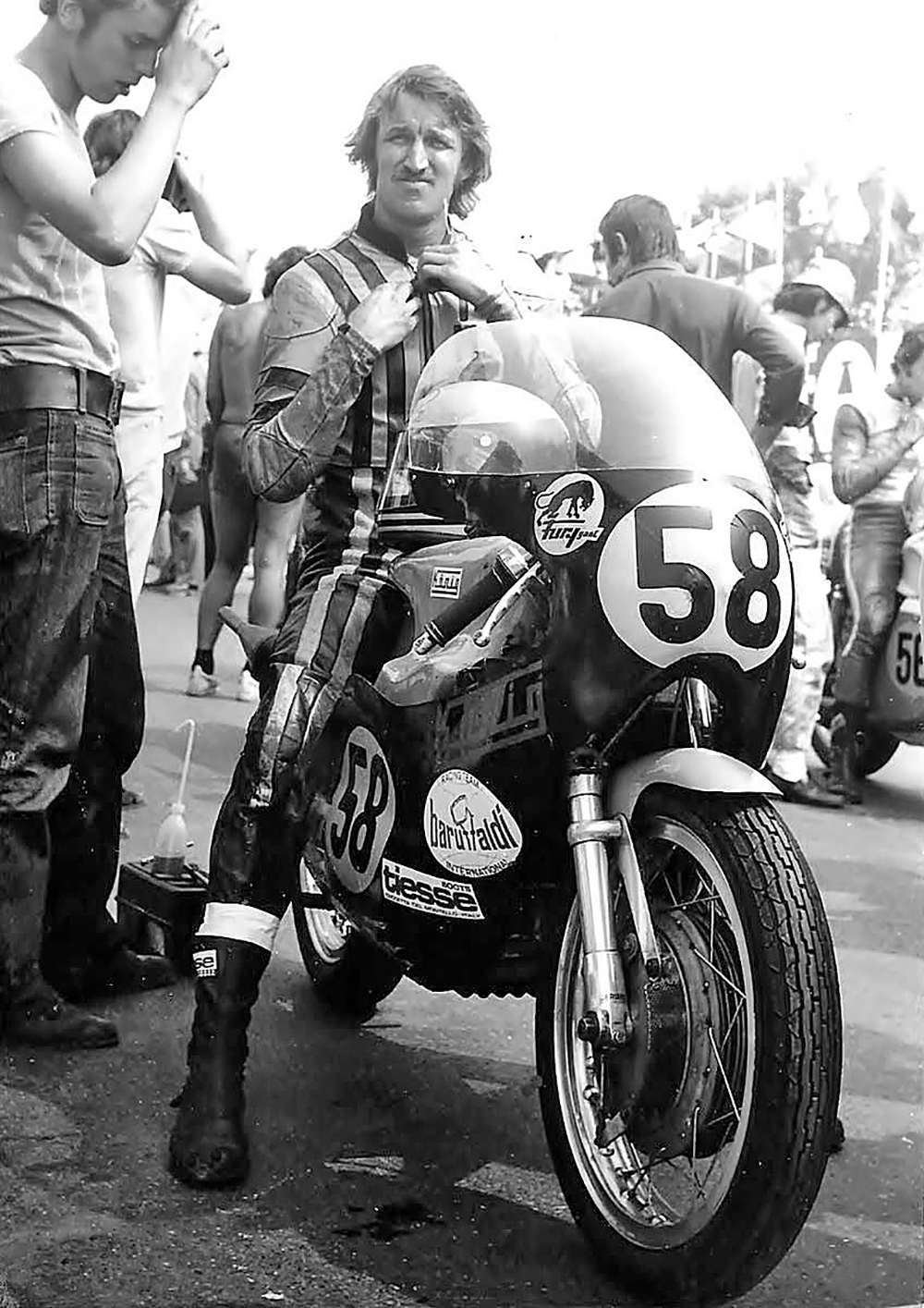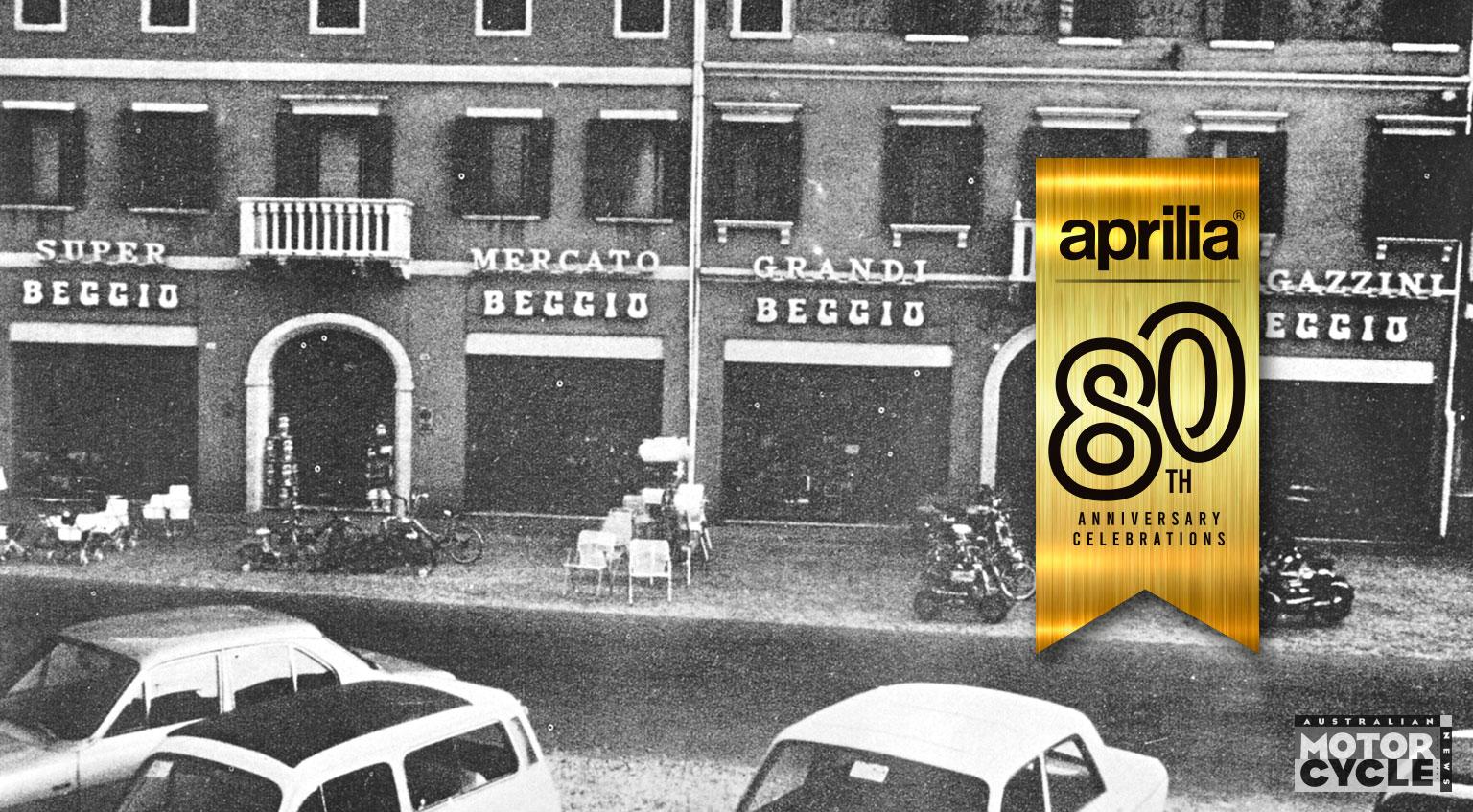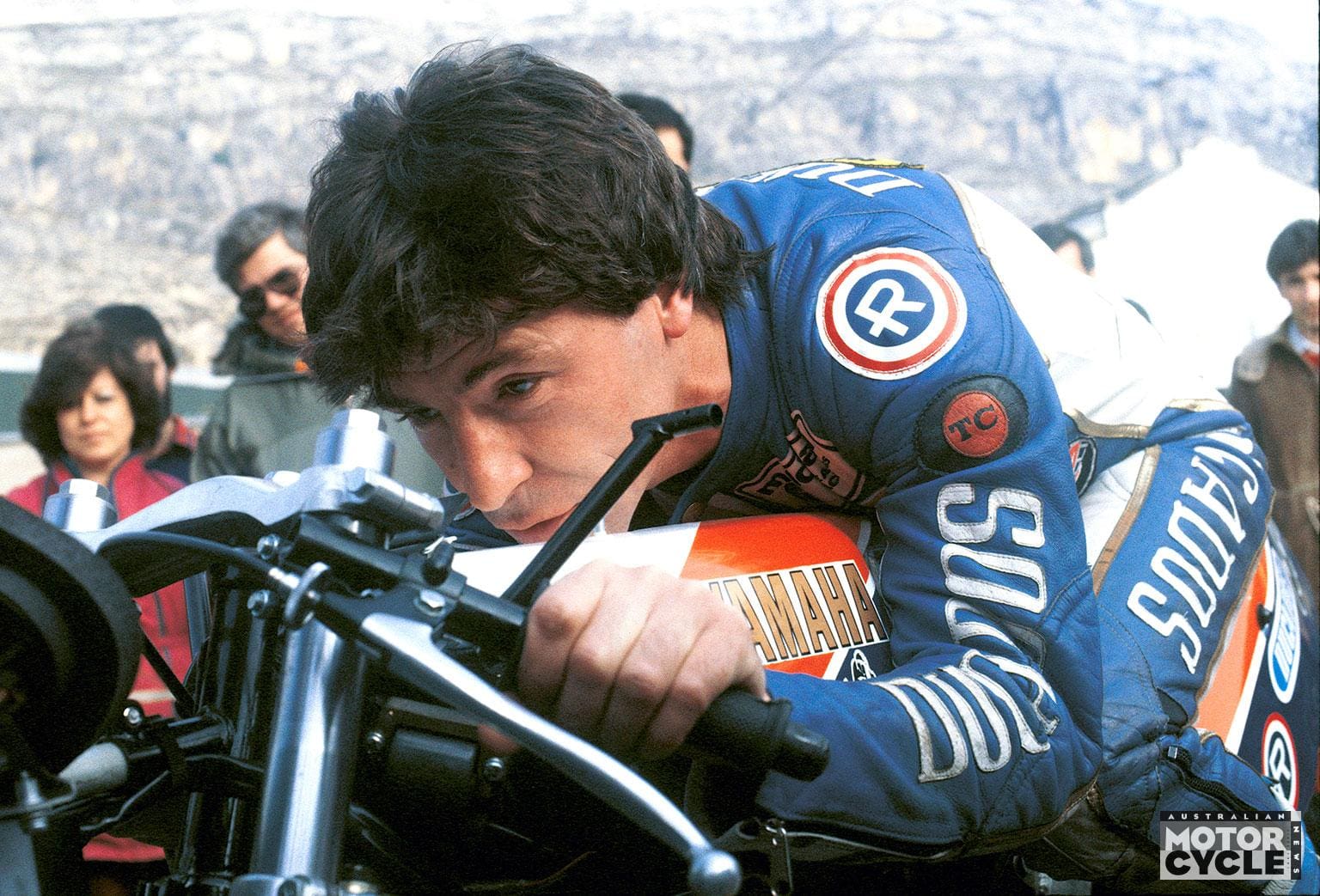On the promise of an engineer’s position with the Maico Factory – and the ideal opportunity to advance his motocross career – Kim Newcombe, and his wife Janeen, were all set to leave Australia for Germany in 1968, however, the job with Maico would not be available until the following year. Kim, who in addition to his motocross racing had enjoyed some success preparing and racing hydroplanes, secured a short-term job with two-stroke engine manufacturer – König Motorenbau in Berlin.
With his experience as a marine mechanic in Melbourne, Kim was familiar with the top-of-the-line König – a 494cc two-stroke, four-cylinder boxer motor that had an amazing power-to-weight ratio and a proven record of reliability. When Kim turned up at König, it was a complete surprise to find one of the so-familiar outboard motors shoehorned into a much modified BSA chassis, built by German motorcycle racer Wolf Braun. The machine had injured Wolf to such an extent that he abandoned the project.
But Dieter König remained in no doubt this engine could power a frontrunner in the 500cc Grand Prix Championship and had no problems convincing Kim that he was the man to build that bike. The job offer from Maico was soon forgotten, as Kim set about resolving the innumerable problems cooling the König boxer motor, with its configuration of two cylinders facing forward and two rearward. And adapting a Norton clutch housing and gearbox with a six-speed gearset to the unconventional powerplant.
Though he had no roadracing experience, it seemed only logical that Kim should be the first to test his creation in competition and he soon obtained a West German national licence. Little more than a year after arriving in Europe – intending to continue his motocross career with Maico – Kim and König scored their first roadracing success on debut. After that Kim immediately set about redesigning the chassis while somehow finding the time to assist Janeen with their newborn son, Mark.
Aussie journeyman John Dodds, already chasing the Continental Circus on a 125 Aermacchi, signed on with König to contest the 1971 500GP Championship, however after a single top-10 result and 10 DNFs, Dodds joined the throngs of Yamaha privateers at the end of the season. It was back to Kim – who by this time had qualified for an international licence – to take up the cause.
Perhaps it was his sympathy with his machine that provided an edge, and Kim finished on the podium in the first event of the 1972 season – the first time he’d taken on the notorious Nurburgring – followed by a top 10 at the French Grand Prix. Broken neck vertebrae curtailed Kim’s activities for the remainder of the 1972 season, though he had already built a fan base, particularly with the Germans.
By this time, the König was putting out more than 80hp and Kim headed to the UK with designs for a new frame to be built by Colin Seeley – who’d become famous for his work with Reynold’s ‘531’ tubing. While in London, Kim was reunited with his old mate Rod Tingate and convinced him to join the König team, still a shoestring operation compared to the might of the MV Agusta operation that had won the past 14 championships.
And the small König squad was certainly overshadowed by the Yamaha invasion headed by the TZ500 of Jarno Saarinen, who won the first two rounds of the 1973 championship. Kim was encouraged with a fifth-place finish at Paul Ricard and König’s first podium for the season came at Salzburg. Disappointment came, however, with a DNF in front of his ‘home’ German supporters at Hockenheim.
The next race, the Yugoslavian Grand Prix, was held around the narrow streets of the Port of Opajita. And it was here Kim achieved his personal ‘Brabham’ moment, winning a World Championship Grand Prix on a bike of his own design, setting the fastest lap of the race and taking the lead in the Championship.
He maintained that lead with a podium at Assen and another at Anderstorp. After that Phil Read’s consistency, combined with MV Agusta’s might, went on to take an unbeatable lead in the championship before the last event, with Kim second and Giacomo Agostini in third.
With the Spanish Grand Prix a dead rubber, Kim was offered start money in the non-championship British International 1000. The chance of a season-ending dividend was too good to miss, and together with Janeen and Mark, he headed to Silverstone with an over-bored König 680.
Turfed out on his ear by the officious Clerk of Course for suggesting hay bales at the tight Stowe Corner, Kim led the 1000 for the first six laps before the overpowered König’s brakes failed at the entry to Stowe.
Kim never regained consciousness after hitting the heavy timber wall and was later posthumously awarded second place in the 1973 500cc World Championship. In less than a decade this talented Kiwi had risen from an apprentice motor mechanic – fettling his own Greeves to second place in the New Zealand Motocross Championship – to winning a 500cc Grand Prix on a machine he’d designed and built himself.
Kim’s short but brilliant career was later immortalised in the 2007 documentary Love, Speed and Loss.













